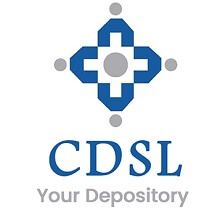What is the full form of CDSLCDSL: Central Depository Service Limited
CDSL stands for Central Depository Service Limited, the key feature of CDSL (Central Depository Services Limited) is to facilitate and hold the securities in electronic form and also facilitate the settlement of trades on the stock exchange. The CDSL is currently the largest depository in terms of the number of Demat accounts in INDIA. It became the first depository in INDIA to open 59.9 million active accounts on 28 Feb 2022. The CDSL holds assets worth INR 37.3 trillion, as observed on 31st march 2022, and up to 580 depository participants are connected with CDSL. Need For CDSL and NSDLIn the year 1991, during the beginning of the Liberalisation process, the size of the Indian capital market increases manifold. But the traditional methods of the settlements through the physical transfer of the securities in the form of Certificates were not able to cope with the need for a growing capital market and obstructed the further growth of the market. The traditional system of physical settlements gave rise to bad and delayed delivery, delays in the registration and transfer of fake certificates, and many other insecurities. Here are the main problems of the Investors were:
Meaning of Depository SystemIt is a system in which the transfer of the securities takes place in a new form of electric book entry method that completely stops the movement of the cheques and the physical delivery of the securities. This new system completely eliminates paper usage and paperwork and also facilitates transparency in the transaction of scrips. With the introduction of the Depository system, the settlement period is also reduced and hence favours the liquidity of the investment in securities. This system was also termed a "Scripless Trading System" because there was no physical delivery of the scrips. This Depository system allows the shareholder to convert the physical scrips into electronic form through a process of Dematerialization of securities. The Depository system also allows the investors or the shareholders to convert their shares from the Depository mode to the Physical mode through the process of rematerialisation of securities. Depository System (CDSL and NSDL)The Depository Act of 1996 creates the pathway for the establishment of Depositories in INDIA. CDSL (CENTRAL DEPOSITORY SERVICE LIMITED) began its operations, or we can say it came into existence in Feb 1999. It was promoted by the Bombay Stock Exchange and jointly with several banks that favour the CDSL. The headquarters of CDSL is in Mumbai. It has a wide DP (Depository Participate) network and offers Demat services like NSDL (National Securities Depository Limited). Services Offered by CDSL and NSDL
Depository Participants: What Are They?A middleman between you, the investor, and CDSL is a depository participant. A DP, then, is a CDSL-authorized agent who serves as a conduit between the beneficial owner, the stock exchange, and the issuing business. The individual who utilises the DP's services is the beneficial owner. Banks, financial institutions, and stockbrokers are permitted to serve as DPs under Securities and Exchange Board of India (SEBI) rules. The CDSL has authorised DPs to assist investors nationwide in handling securities in a digital format. A CDSL Demat Account: What is It?Your account with CDSL is known as your CDSL Demat account. You must go to a DP, a list of which may be available on CDSL's website, to open a CDSL Demat account. Once you have decided on a DP that is registered with CDSL, you must submit your KYC paperwork, which must include an address verification and PAN card, along with your bank account information. You will receive your CDSL Demat account number and other pertinent information once your verification is successful. The CDSL Demat account will be helpful for trading stocks and other securities in addition to using CDSL services. The CDSL offers Demat accounts with a 16-digit numeric character. Benefits of CDSLThe benefits of holding securities with CDSL are numerous. Among them are:
Disadvantages of CDSLCDSL also has some drawbacks. A few are:
Next TopicFull Form
|
 For Videos Join Our Youtube Channel: Join Now
For Videos Join Our Youtube Channel: Join Now
Feedback
- Send your Feedback to [email protected]
Help Others, Please Share










